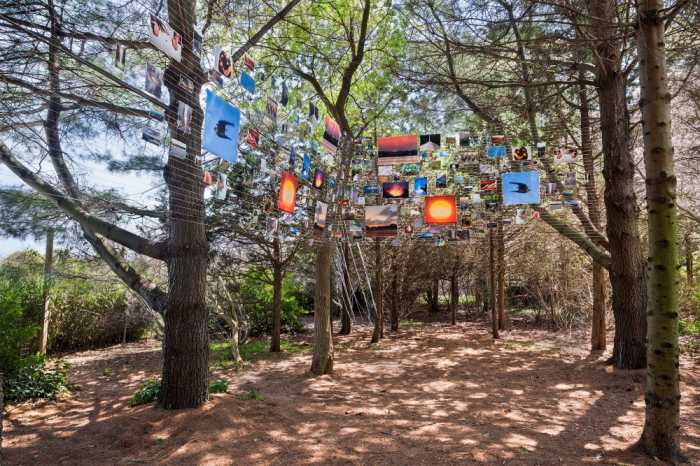“And I saw the lamb open one of the seals, and I heard, as if it were the noise of thunder, one of the four beasts saying, come and see. And when he opened the third seal, I beheld a black horse; and he that sat on him had a pair of scales in his hand.” So spoke John in the Book of Revelation.
The rider on the black horse was one of the Four Horsemen of the Apocalypse and the sound of their hoof beats meant the spreading of havoc and doom in the world. The black horse symbolized death from famine and the weighing scales foretold how the scarcity of bread would be weighed.
Famine. One trembles at its nightmarish sound. Since the dawn of man it has bled our sense of security and imperiled our peace of mind. Writings still exist from ancient Egypt describing its horrors; how the craving hunger drove parents not to bury but to eat their dead children. In modern times, famines continued to erupt in sub-Saharan Africa, South Asia and parts of Latin America. Skeletal images of emaciated children, covered with flies and lice, are familiar sights as pleas of help for the starving and the dying.
Malthusian agronomics (named after Thomas Malthus) holds that populations tend to increase at a faster rate than its means of subsistence and unless held in check by Procrustean measures of mandatory birth control, disease, war or some natural disaster then widespread poverty, degradation and death inevitably results. After dramatic increases in human population during the 1950s and ’60s, Paul Erlich’s book, The Population Bomb won critical acclaim by predicting that by the 1970s, global starvation was unstoppable and that the idea that countries with enormous population growth, like India, could ever feed themselves, was a fantastical and implausible notion.
Norman Borlaug, who recently died at age 95, was a visionary who believed that the indigent of the earth could find sanctuary from mass starvation. An op-ed piece in The Wall Street Journal called him the greatest American of the 20th century. In light of his monumental accomplishments, the Journal, if anything, might have understated things a bit.
Borlaug, who was born in rural Cresco, Iowa, in 1914, is one of those quintessential American stories embodying the old-fashioned can-do spirit. Educated in a one-room schoolhouse, Borlaug became an agricultural scientist who devoted his enormous energies to alleviating the plight of undeveloped countries where the prospect of starvation and famine was all too real.
In Isaiah Berlin’s famous 1953 essay, “The Hedgehog and the Fox” (a title Berlin borrows from the Ancient Greek Poet, Archiloclus, who states, “the fox knows many things but the hedgehog knows one big thing – or one great truth.) Berlin seeks to dispel Leo Tolstoy’s view in his great novel, War and Peace, that individuals are impotent and helpless in shaping and controlling the chaotic swirl of history. Individuals, said Berlin, can and do make a difference, even large and defining differences, in world events.
Borlaug was the Hedgehog, in the midst of all the foxes, who knew the one great truth. He knew that armed with the right techniques, human beings can become captains of their fate instead of being just spectators at their own demise. It was this unique understanding that enabled him to save more lives (estimates hover around one billion) than anyone in history.
Borlaug’s great insight was that ills that are often blamed on progress are really a result of stagnation. If agriculture is to be truly productive, Bourlaug believed, it needs the benefits of science and the services of a modern city. Indeed, the most thoroughly rural countries exhibit the most unproductive agriculture.
The great potato famine that struck Ireland was so devastating because the Irish, although an agricultural people, had virtually no resources to fight the colossal food crisis. While the British government (with the notable exception of Prime Minister Sir Robert Peel early on) did nothing to cover themselves with glory in meeting the crisis, their fatuous and callous policies was not the principal reason for Ireland’s extreme vulnerability against the onslaught of starvation and disease
In early September 1845, a thick, prolonged fog hauntingly settled over the beautiful green fields of the emerald countryside. The potato plants turned black and rotted away. Soon, cool breezes from a moist summer air carried the airborne fungus to surrounding plants traveling at a distance of 50 miles a week, repeating its ritual of destruction.
With a pre-industrial economy, there were no mills to grind grain as an alternative food source, no mechanics or tools to build mills – no ovens to bake bread to give succor to famished and grotesquely distended stomachs. No mechanism to disseminate information about how to grow crops other than potatoes, which the population chiefly, if not exclusively, depended upon. Meanwhile, there was pitifully few ways to distribute seeds of other crops or to supply farm tools that were indispensable in changing the dynamics of food production.
Even relief efforts, coming from as far away as Boston, Massachusetts, were frustratingly and tragically hindered by the absence of technological capability. Ireland had no ports to receive food where the need was greatest, and no interior infrastructure existed to transport food once it arrived. In a raging storm of hunger and pestilence, Ireland stood exposed, unguarded, unarmed and defenseless. The result was one of the great human tragedies of the 19th century.
It would be Norman Borlaug who would lead a 20th-century crusade to fortify and shelter the undeveloped world from this kind of apocalyptic denouement. His “Green Revolution” techniques prevented global famine in areas where it was widely predicted. He developed high yielding crop varieties that led to unprecedented harvests and dramatic worldwide increases in agricultural productivity that fed literally hundreds of millions in Mexico, South America, India, Pakistan, Africa and Asia.
Mobilizing and training a small army of agricultural specialists he would, with a missionary zeal, lead them to impoverished lands with the purpose of educating poor farmers on agricultural techniques to prevent the annihilating effects of famine. His Olympian efforts earned him a Nobel Peace Prize as well as the hostility of many in the environmental movement for his partial use of pesticides and tons of fertilizers.
The carping of his critics, usually affluent environmentalists with surfeited bellies, nonplused Borlaug who pointed out that Western environmentalists issued their criticisms not from the killing fields of pestilence that he labored in, but from faraway cushy office suites. Let them spend one month, Borlaug would thunder, amid the misery of the developing world, as I have for 50 years, and they’d be crying out for pesticides, fertilizers and irrigation canals.
Three years ago, Bourlaug found vindication when the Rockefeller Foundation joined with the Bill and Melinda Gates Foundation in announcing a major expansion of Borlaug agricultural techniques throughout Africa.
Norman Borlaug, he saved a billion lives and never breathed a word of self-regard about it. Yet, in a mass media, celebrity soaked culture, almost no one in America knows him. But then Borlaug’s object was never celebrity, fame or riches. It was humanity, only humanity that moved him to great and selfless exertions. What a life – what a legacy – what an epitaph.































